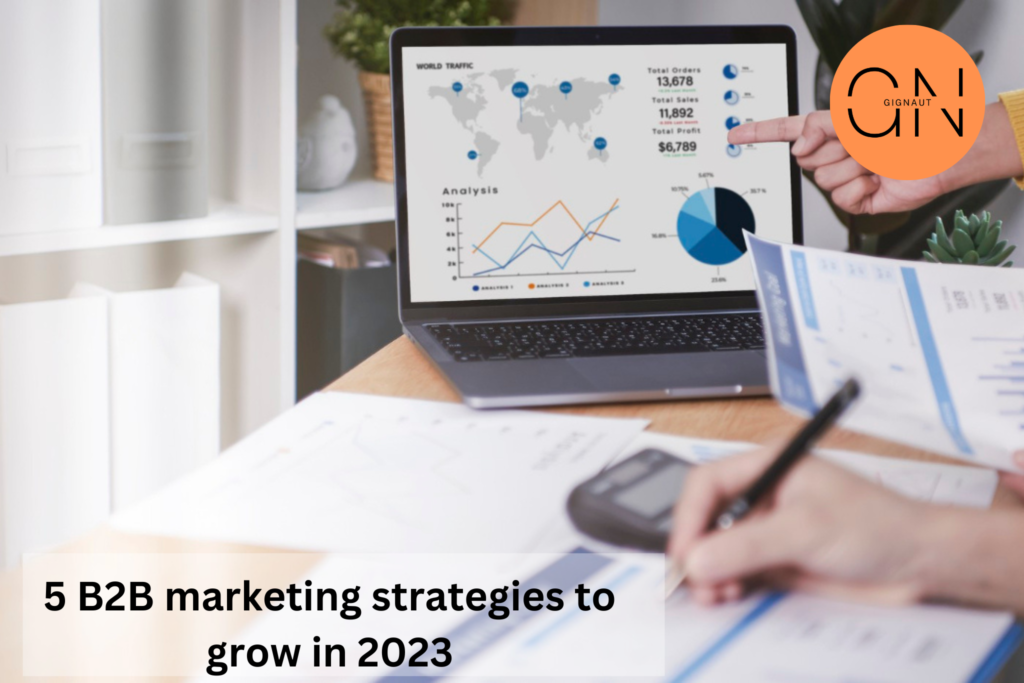In the ever-evolving realm of today’s digital landscape, the phenomenon of video marketing has emerged as an exceptionally potent weapon for enterprises, encompassing those within the B2B SaaS (Software as a Service) realm. With its profound capacity to proficiently transmit information, captivate viewers, and catalyze conversions, video has undeniably cemented its status as an indispensable constituent of triumphant marketing strategies. Within the confines of this article, we shall delve into a comprehensive exploration of the paramount practices and invaluable insights for harnessing the full potential of video marketing within the B2B SaaS domain, empowering you to augment your brand’s prominence, captivate your intended audience, and ultimately boost your business growth.
Table of Content
Best Practices for Video Marketing in B2B SaaS |
|---|
| 1. Understanding the Power |
| 2. Defining Your Video Marketing Goals |
| 3. Identifying Your Target Audience and Tailoring Your Videos |
| 4. . Crafting Compelling Video Content |
| 5. Choosing the Right Video Platforms and Distribution Channels |
| 6. Measuring and Analyzing Video Performance |
| 7. Staying Ahead with Evolving Video Trends |
1. Understanding the Power
Videos possess a remarkable capacity to seize attention and convey intricate ideas in a succinct yet captivating manner. Within the realm of B2B SaaS, where offerings may entail intricacy and technicality, videos emerge as invaluable tools that streamline explanations, rendering them more approachable and indelibly etched in the minds of prospective clientele. By integrating videos into your marketing endeavors, you can adeptly showcase the features of your software, accentuate its merits, and vividly illustrate how it seamlessly resolves the pain points of your intended audience.
2. Defining Your Marketing Goals
Before diving into video production, it’s crucial to define clear goals for your B2B SaaS video marketing campaign. This will help you stay focused, measure success, and align your efforts with your overall business objectives. Some common goals to consider include:
- Increasing brand awareness and visibility within the B2B SaaS market.
- Educating and informing potential clients about your product or service.
- Generating leads and driving conversions.
- Establishing thought leadership and building trust within the industry.
- Enhancing customer retention and satisfaction through educational or tutorial videos.
- Identifying your specific goals will guide the content, tone, and distribution strategy of your videos.
3. Identifying Your Target Audience
To maximize the impact of your video marketing campaign, it’s crucial to identify and understand your target audience. B2B SaaS products often cater to specific industries, niches, or job roles, and tailoring your videos to resonate with these segments can significantly improve engagement and conversion rates. Consider creating buyer personas to gain deeper insights into your audience’s pain points, motivations, and preferences. Use this knowledge to shape the content, tone, and style of your videos, ensuring they address your audience’s needs effectively.
4. Crafting Compelling Content
Creating high-quality and compelling video content is the cornerstone of a successful B2B SaaS video marketing strategy. Here are some tips to help you craft engaging videos:
a) Keep it concise and focused: In today’s attention-deficit world, shorter videos tend to perform better. Focus on delivering your key messages succinctly, ensuring your videos are informative and engaging without overwhelming your audience.
b) Tell a story: Storytelling is a powerful tool in video marketing. Craft narratives that resonate with your audience, highlighting the challenges they face and how your product or service can provide solutions. A well-told story can captivate viewers and create an emotional connection.
c) Show, don’t just tell: Demonstrate your software in action to help viewers visualize its benefits. Use screen captures, product demos, or case studies to showcase the value your B2B SaaS solution brings to clients.
d) Incorporate customer testimonials: Leverage the power of social proof by including customer testimonials in your videos. Genuine testimonials from satisfied clients can build trust and credibility, convincing potential customers of your software’s effectiveness.
e) Optimize for search engines: Ensure your videos are discoverable by optimizing them for search engines. Use relevant keywords in your video titles, descriptions, and tags to improve visibility and reach a wider audience.
5. Choosing the Right Platforms and Distribution Channels
To maximize the reach and impact of your B2B SaaS videos, it’s crucial to select the right platforms and distribution channels. Consider the following options:
a) Your website: Embedding videos on your website allows visitors to easily access and engage with your content. Create dedicated video landing pages or include videos on relevant product or service pages to provide additional information and increase conversions.
b) YouTube: As the second largest search engine after Google, YouTube offers immense potential for reaching a wide audience. Create a branded YouTube channel and optimize your videos for search keywords to increase visibility. Consider adding annotations or end screens to encourage viewers to explore more of your content or take desired actions.
c) Social media platforms: Leverage popular social media platforms such as LinkedIn, Twitter, and Facebook to share your B2B SaaS videos. Tailor your videos to suit each platform’s audience and format. Encourage social sharing and engagement to amplify your reach and foster brand advocacy.
d) Email marketing: Incorporate videos into your email marketing campaigns to boost engagement and click-through rates. Use enticing video thumbnails and compelling subject lines to encourage recipients to watch your videos. Host your videos on platforms like Vimeo or Wistia and include a clear call-to-action within your emails.
e) Webinars and virtual events: B2B SaaS companies often host webinars or participate in virtual events to engage with their target audience. Incorporate videos within these events to deliver impactful presentations, demonstrate product features, and provide valuable insights. This helps establish your brand as an industry thought leader.
f) Paid advertising: Consider using paid advertising platforms such as Google Ads or social media ads to promote your videos to a targeted audience. Utilize precise targeting options to reach decision-makers or key influencers within organizations that could benefit from your B2B SaaS solution.
6. Measuring and Analyzing Performance
To gauge the effectiveness of your B2B SaaS video marketing efforts, it’s important to measure and analyze key performance metrics. Some metrics to track include:
a) Views and play rates: Monitor the number of views your videos receive and the play rates (percentage of visitors who click play) to assess initial engagement.
b) Engagement metrics: Analyze metrics such as likes, comments, and shares to gauge audience engagement and sentiment toward your videos.
c) Conversion rates: Track how videos impact conversions, such as form submissions, sign-ups, or sales. Implement tracking mechanisms to attribute conversions to specific videos or video campaigns.
d) Audience retention: Analyze the average view duration and audience drop-off rates to understand at which points viewers lose interest. This information can help refine your video content and improve viewer engagement.
e) Social media metrics: Assess the reach, impressions, and engagement metrics specific to each social media platform where your videos are shared.
Use these insights to refine your video marketing strategy, optimize future videos, and continually improve your campaign’s effectiveness.
7. Staying Ahead with Evolving Video Trends
As technology and consumer preferences evolve, it’s crucial to stay updated with emerging video trends in the B2B SaaS industry. Consider adopting the following trends to stay ahead of the competition:
a) Interactive videos: Interactive videos allow viewers to actively engage with the content by making choices or interacting with elements within the video. This immersive experience can enhance viewer engagement and provide valuable data insights.
b) Personalized videos: Tailor your videos to individual viewers by incorporating personalized elements such as their name, company, or specific pain points. Personalization creates a sense of relevance and increases the chances of capturing viewer attention.
c) Live streaming: Embrace live streaming to engage with your audience in real
c) Live streaming: Embrace live streaming to engage with your audience in real time. Host live webinars, Q&A sessions, or product demonstrations to interact directly with potential customers. Live streaming adds an element of authenticity and allows for immediate feedback and engagement.
d) 360-degree videos and virtual reality (VR): Explore the potential of 360-degree videos and VR to create immersive experiences. This can be particularly impactful for showcasing product demos or providing virtual tours of your software or services.
e) Short-form videos and stories: With the rise of platforms like Instagram and TikTok, short-form videos and stories have gained popularity. Consider creating snackable, bite-sized videos that quickly grab attention and deliver key messages. These formats are particularly effective for capturing the attention of busy professionals.
f) User-generated content: Encourage your customers to create and share their own videos showcasing their experience with your B2B SaaS product. User-generated content adds authenticity, builds trust, and expands your reach through the networks of satisfied customers.
By embracing these emerging trends and experimenting with new video formats, you can stay relevant and captivate your audience in innovative ways.
Wrapping Up
Video marketing has become an indispensable tool for B2B SaaS companies looking to establish their brand, engage their target audience, and drive business growth. By understanding the power of video, defining clear goals, crafting compelling content, choosing the right platforms, measuring performance, and staying ahead of evolving trends, you can create impactful video marketing campaigns that resonate with your audience and deliver tangible results.
As you embark on your B2B SaaS video marketing journey, remember to continually refine your strategies based on audience feedback and data analysis. Video marketing is a dynamic and ever-evolving field, and staying agile and adaptable will help you maintain a competitive edge.
Invest in the power of video marketing, unleash your creativity, and watch your B2B SaaS business thrive in the digital realm.
Get in touch with the Gignaut team today to start measuring and improving your marketing efforts.
Check the B2B SaaS Marketing Handbook to learn more.





